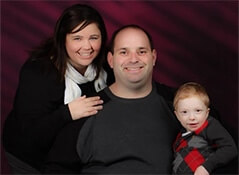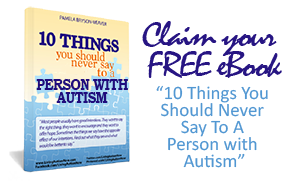A child who has autism can be quite a handful to parents, teachers, and to caregivers. One’s patience can be tested over and over again especially when one lacks knowledge about the symptoms. A person living with a child on the spectrum requires hands-on knowledge and understanding about Autism’s complexities and intricacies to better handle the situation and to easily navigate through the complex maze of developmental needs and interventions required to address a child-with-autism’s needs.
For parents who are battling this dilemma for the first time, it is important to know some of the unique behavioral characteristics that individuals with autism usually manifest. Though behavioral symptoms can vary by severity, age, and intervention level applied, these behavioral characteristics are often present separately or sometimes as a cluster:
Ritual and Routine
Children with autism easily get upset when their routine is interrupted, or when an object of their attention is taken away. Most, if not all, children with autism have specific ritual that involves mastering a specific skill as a way for them to feel at ease and secure in a given condition. Most also adheres to specific timeframe when addressing their needs.
Temper Tantrums or Meltdowns
It is “normal” for children living in the spectrum to display violent or destructive behavior. Some children may even injure themselves or others. They can also be uncontrollable physically and may start shaking violently. Some would seethe in anger and can keep still on the said condition over time. Though a “normal” manifestation, temper tantrums can be prevented when handled carefully. Behavioral interventions are often used as a therapy to kids with autism to prevent such meltdowns from happening.
Stereotyped, Repetitive, and Irregular Body Movements
Open display of irregular or stereotyped body movements is a common trait among children with autism. These movements are often involuntary, that is, they do not have any control over these movements. Children with autism are unaware of this manifestation. Often, these movements are displayed when nervous or when they are upset. Repetitive movements, on the other hand, are common denominator among individuals with autism. These movements usually deliver a sense of security and calming effect to them. Some of the most common irregular, stereotyped, and repetitive movements are fidgeting, tapping, rocking, grimacing, hand flapping and wringing, spasms, hopping/skipping, shrugging, and even mimicking other people’s actions.
Obsessive-Compulsive Behavior
Obsession is another common trait among children, teens, and even adults with autism. This could be over objects, subjective areas of interest, or certain themes. The problem with this “fixation” often affects behavior leading to compulsive actions. Children, for instance, can be fixated on an object like a toy, taking them apart, and then fixing them again closely observing how it works. Do take note that this so-called “fixation” encompasses certain intensity of focus but can also come to an end.
Oppositional Behavior
Children or teens on the spectrum may also scream, kick, or manifest unruly behavior when parents or caregiver remove him from a comfortable environment. All things and environment unfamiliar to a child with autism often draw out an oppositional behavior from them. This could be due to extreme anxiety, fear or sometimes anger from being uprooted from his fixation or comfortable environment. Parents who often encounter this problem may seek intervention by learning how to coach their child on how to adapt to new locations, situations or experiences





